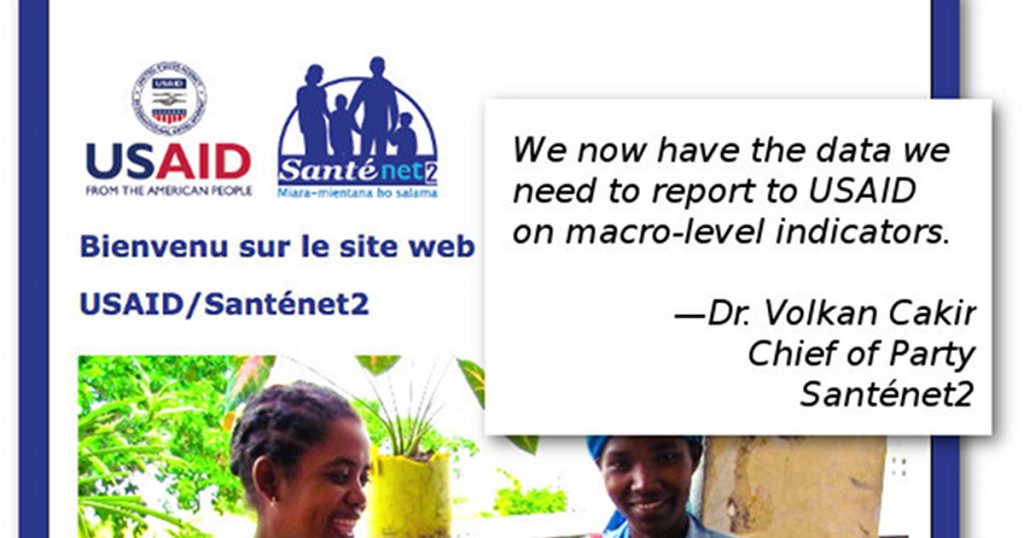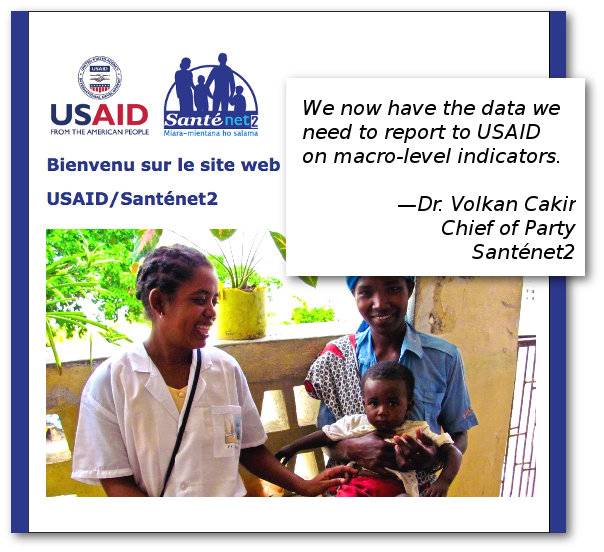
Repost: Written by me, originally published on the DataWinners site for Human Network International
With major USAID projects come major USAID reporting requirements.
Santénet2 is a public health initiative that needs to summarize, aggregate, and report on the interventions of 12,000 community-based health workers in Madagascar every month.
The task of collecting this information falls on 200 community health supervisors. At first only 5 percent of these supervisors completed their monthly paperwork. However, most of these supervisors owned mobile phones. Santénet2 decided to put mobile technology to work with our platform [DataWinners].

Reporting rates improved by 1300 percent after the supervisors were trained to send their reports via text messages using our platform. The data is parsed automatically into the headquarters’ database.
The scale and scope of the project is enormous. The intervention zones covers over 60 percent of Madagascar and includes 6,000 villages located in mostly remote, rural areas.
Project staff has trained more than 12,000 community-based health workers to:
- Improve child survival, maternal health, and nutrition;
- Reduce unintended pregnancy and promote healthy reproductive behavior;
- Reduce transmission and impact of HIV/AIDS
Before implementing our platform, each of the 12,000 community-based health workers filled out a paper form summarizing their monthly results (e.g. Number of sick children visited).
The 200 supervisors would then visit four or five communities each month to summarize the data and email the results to Santénet2 headquarters.
Early on, Dr. Volkan Cakir, Chief of Party, recognized a need for change: “From the beginning, we knew we had to innovate to be able to report on our success.”
We now have the data we need to report to USAID on macro-level indicators.
We no longer have to extrapolate. Data from the field show our community health workers treated more than 100,000 cases of childhood illness in twelve months, and almost 80,000 women are using community based Family Planning services.
HNI created a custom reporting system and helped Santénet2 to select 12 key indicators, such as the number of children diagnosed with Malaria.
Of the project’s supervisors, 97 percent had reported data by SMS at least once within a few months of the training. This is an impressive achievement compared to the 5% reporting rate prior to adopting the platform. Two-thirds of the supervisors now report consistently and each month the submission rate improves.
The Santénet2 project is implemented by RTI International.

